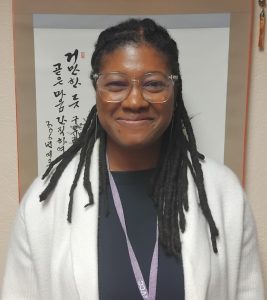Tibetologist teaches of mindfulness and positivity
April 6, 2017
“Be aware of your inner radiance, your inner blissfulness, and your inner playfulness of yourself.” This was one of the many sayings that Lama Glenn Mullin repeated as he shared his experiences traveling and living in some of the most beautiful places in the world.
On March 15 at noon, Mullin spoke at the main campus of IVCC and at 7 p.m. that evening in Ottawa at the Reddick Public Library. Though he spoke twice, both presentations were a bit different.
Mullin is not only a Tibetologist, but he also translates classical Tibetan Literature, is a Buddhist writer and he is a teacher of Tantric Buddhist meditation. According to his biography in one of his books, “Glen lived in the Indian Himalayas between 1972 and 1984, where he studied philosophy, literature, meditation, yoga and the enlightenment culture under thirty-five of the greatest living masters of the four schools of Tibetan Buddhism.”
Since then he has written over 20 books, which two of them have been given prestigious recognition, has been a co-producer for Tibetan sacred music and has worked in and with Tibetan related films and documentaries. He also co-founded and directed an association called “The Mystical Arts of Tibet,” which involves bringing “Tibetan monks to North America to perform sacred Temple music and dance, as well as create mandala sand paintings,” according to his biography. Today, Mullin advises and leads groups of traveling groups that come to the scared places of Tibet and Nepal. This spring, IVCC teacher and close friend of Mullin, Dan Retoff, is traveling with him to Tibet.
The first presentation at the main campus consisted of discussing the Tibetan meditation caves along with their history and ancient stories.
He says that sometimes you have to go 13,500 feet high to see some of the most breathtaking sites and geographical landscapes, such as Terdrom Mountain, which has many nunneries and can be difficult to hike. The Taktsang, “The Tiger’s Nest,” which is a Yeshe Tsogyal cave in Bhutan, the cave of the Dharma Kings in Marpo Ri, on which Potala is built upon, and Samye, Tibet’s first monastic university are other places with meditation caves.
He told many different stories and how Tibetan culture came to be. The name “Tibet” came from the phrase “mountain Goddess,” and the caves are known to represent female energy. The Tibetan myth of how humans were created was quite different from other stories or theories. It began with how “the abominable snow lady fell in love with the monkey,” said Mullin, “and though the monkey rejected her, she persisted. Therefore, that is how humans were created. It is in Tibetan belief that human creation started in Tibet.”
Mullin also shared some works of poetry written by the Dalai Lamas, from centuries before, including one of his most admired Lama, the seventh. All of the poetry was well written and made to have a positive outlook in reflection on life itself.
That evening at the Reddick Library, the majority of his presentation focused on meditation; the process of it and how to find ways to meditate. The audience was mainly adults, but his most vocally eager audience member was a younger child that attended with his father. Mullin, as well as everyone else there, really seemed to enjoy hearing and listening to the child’s curious questions about the art of meditation. It showed even the simplest acts, such as mediation, can catch attention and interest of youth, not just adults.
Aside from questions and serious factual discussion, Mullin was able to amuse his audience with laughter throughout the presentation with funny jokes, witty comebacks, translations and inspiring words of wisdom.
One quote that left everyone with a chuckle was “Us men, we can save up to two maidens at a time, but we are really just practicing to save the world.”
He had humorous replies to questions such as “Waffles are for masochists,” when a student asked him if he was more of a “waffle or pancake guy.” When someone asked how to focus away from the people who trouble them he simply replied, “People who bother me might do it a few times a day, but they bother themselves all day.”
Mullin portrayed his outlook on life with reassuring sayings, such as “Breath in with joy, breath out with joy.” He claimed that “Our minds should be as free and uncluttered as an eagle, flying through the clouds and rainbows of an un-constructed sky.”
And that in this life, “Visit the acupuncture spots in the world” to travel to the places where we can let go, and feel most happy and at peace.
In meeting Glenn Mullin, people learned about how to have an optimistic view on life. Realizing that staying positive, being aware of your inner radiance, your inner blissfulness and your inner playfulness is something he claims is needed to be truly happy.



